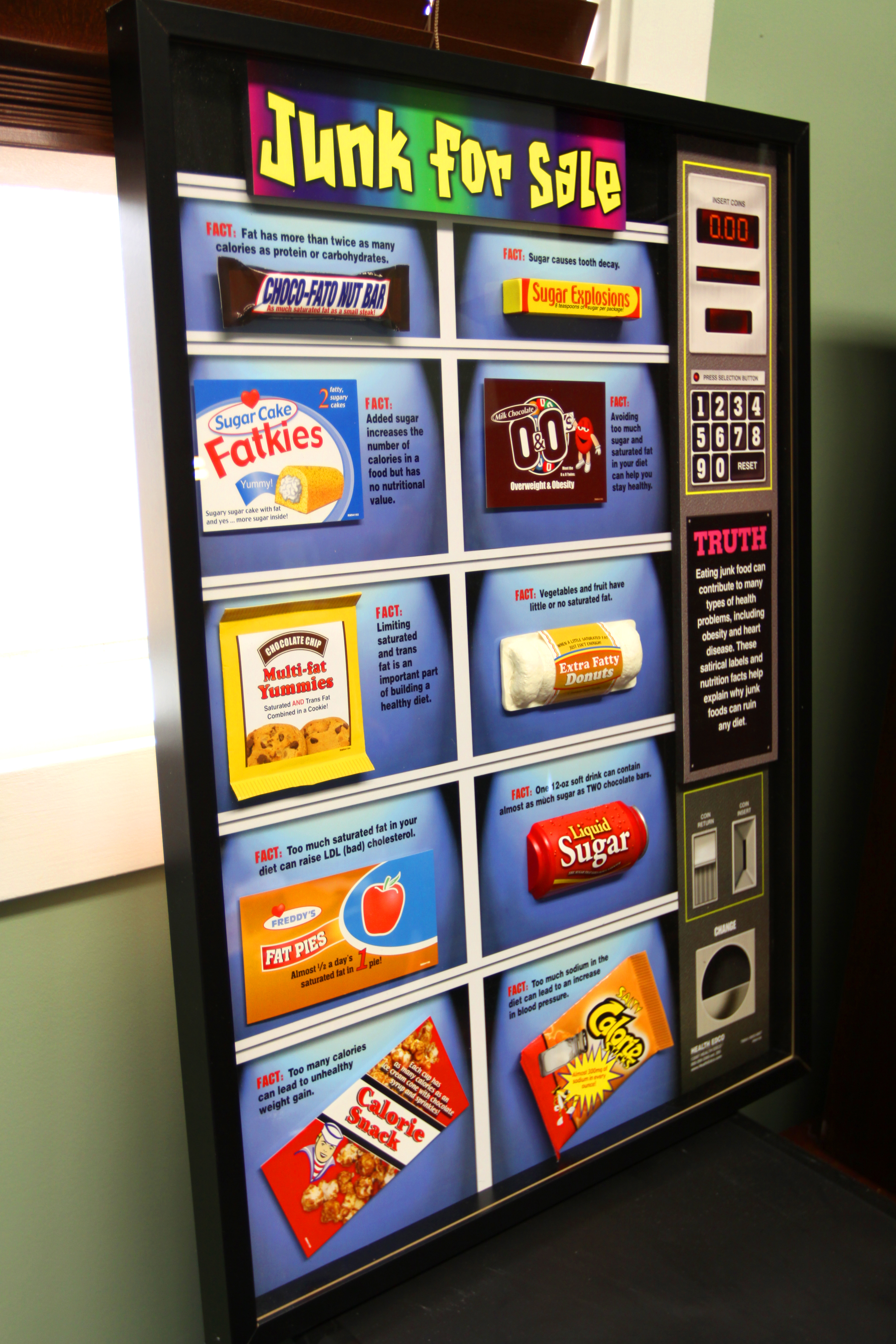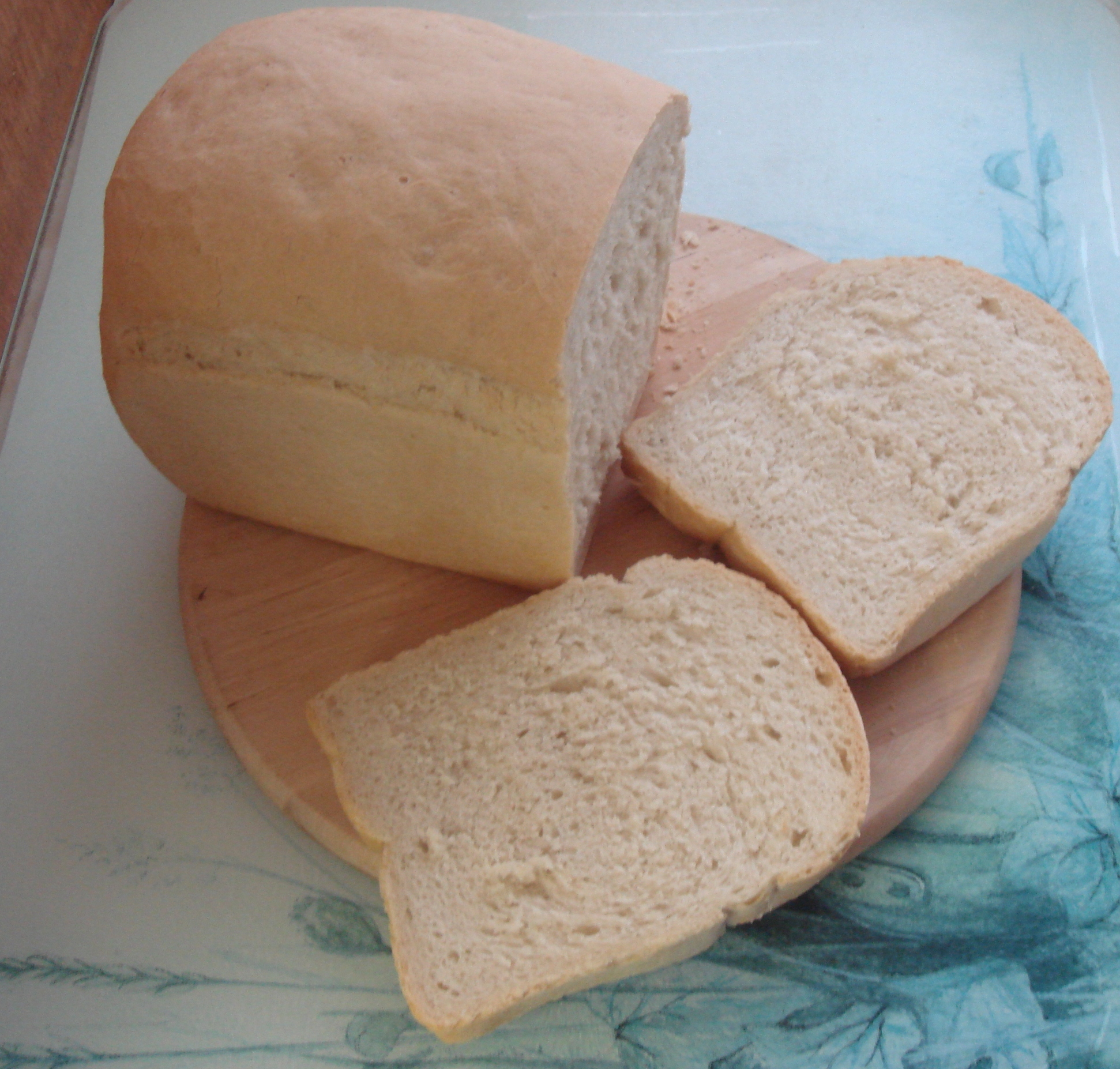|
Junk Food
"Junk food" is a term used to describe food that is high in calories from sugar and/or fat, and possibly also sodium, but with little dietary fiber, protein, vitamins, minerals, or other important forms of nutritional value. It is also known as HFSS food (high in fat, salt and sugar). The term ''junk food'' is a pejorative dating back to the 1950s. Precise definitions vary by purpose and over time. Some high-protein foods, like meat prepared with saturated fat, may be considered junk food. Fast food and fast food restaurants are often equated with junk food, although fast foods cannot be categorically described as junk food. Most junk food is highly processed food. Concerns about the negative health effects resulting from a junk food-heavy diet, especially obesity, have resulted in public health awareness campaigns, and restrictions on advertising and sale in several countries. Current studies indicate that a diet high in junk food can increase the risk of depression, ... [...More Info...] [...Related Items...] OR: [Wikipedia] [Google] [Baidu] |
Advertising
Advertising is the practice and techniques employed to bring attention to a product or service. Advertising aims to put a product or service in the spotlight in hopes of drawing it attention from consumers. It is typically used to promote a specific good or service, but there are wide range of uses, the most common being the commercial advertisement. Commercial advertisements often seek to generate increased consumption of their products or services through "branding", which associates a product name or image with certain qualities in the minds of consumers. On the other hand, ads that intend to elicit an immediate sale are known as direct-response advertising. Non-commercial entities that advertise more than consumer products or services include political parties, interest groups, religious organizations and governmental agencies. Non-profit organizations may use free modes of persuasion, such as a public service announcement. Advertising may also help to reassure employees ... [...More Info...] [...Related Items...] OR: [Wikipedia] [Google] [Baidu] |
Barry Popik
Barry Popik (born 1961) is an American etymologist. Popik is a consulting editor of the ''Oxford Encyclopedia of Food and Drink in America'' and was described in ''The Wall Street Journal'' as "the restless genius of American etymology". Early life and education Popik was born and raised in Rockland County, New York, in 1961, to Silvia Stahl and Sidney Popik. He was educated at Rensselaer Polytechnic Institute, in Troy, New York, graduating with a B.S. in economics in 1982 and a B.S. in management in 1982. He received a J.D. from Touro Law School in Huntington, New York, in 1985. Career Popik is a contributor-consultant to the ''Oxford English Dictionary'', ''Dictionary of American Regional English'', ''Historical Dictionary of American Slang'' and ''The Yale Book of Quotations''. Popik's theory on the etymology of "Big Apple" — that it was first popularized in the 1920s by sports writer John J. Fitz Gerald — led to the New York City street corner where Fitz Gerald lived ... [...More Info...] [...Related Items...] OR: [Wikipedia] [Google] [Baidu] |
Soft Drink
A soft drink (see § Terminology for other names) is a drink that usually contains water (often carbonated), a sweetener, and a natural and/or artificial flavoring. The sweetener may be a sugar, high-fructose corn syrup, fruit juice, a sugar substitute (in the case of ''diet drinks''), or some combination of these. Soft drinks may also contain caffeine, colorings, preservatives, and/or other ingredients. Soft drinks are called "soft" in contrast with " hard" alcoholic drinks. Small amounts of alcohol may be present in a soft drink, but the alcohol content must be less than 0.5% of the total volume of the drink in many countries and localities See §7.71, paragraphs (e) and (f). if the drink is to be considered non-alcoholic. Types of soft drinks include lemon-lime drinks, orange soda, cola, grape soda, ginger ale, and root beer. Soft drinks may be served cold, over ice cubes, or at room temperature. They are available in many container formats, including ... [...More Info...] [...Related Items...] OR: [Wikipedia] [Google] [Baidu] |
Sundae
A sundae () is an ice cream dessert of American origin that typically consists of one or more scoops of ice cream topped with sauce or syrup and in some cases other toppings such as: sprinkles, whipped cream, marshmallows, peanuts, maraschino cherries, or other fruits (e.g. bananas and pineapple in a banana split). According to the '' Online Etymology Dictionary'', the origin of the term ''sundae'' is obscure. History Among the many stories about the invention of the sundae, a frequent theme is that the ice cream sundae was a variation of the popular ice cream soda. According to an account published by the Evanston Public Library (Illinois), the sale of soda was prohibited on Sundays in Illinois because they were considered too "frilly". Other origin stories for the sundae focus on the novelty or inventiveness of the treat or the name of the originator and make no mention of legal pressures. The ice cream sundae soon became the weekend semi-official Soda shop, s ... [...More Info...] [...Related Items...] OR: [Wikipedia] [Google] [Baidu] |
Milkshake
A milkshake (sometimes simply called a shake) is a sweet beverage made by blending milk, ice cream, and flavorings or sweeteners such as butterscotch, caramel sauce, chocolate syrup, fruit syrup, or whole fruit into a thick, sweet, cold mixture. It may also be made using a base made from non-dairy products, including plant milks such as almond milk, coconut milk, or soy milk. Milkshakes originated in the United States around the turn of the 20th century, and grew in popularity following the introduction of electric blenders in the subsequent two decades. They became a common part of youth popular culture, as ice cream shops were a culturally acceptable meeting place for youth, and milkshakes became symbolic of the innocence of youth. Preparation Full-service restaurants, ice cream shops, soda fountains, and diners usually prepare the shake in a milkshake machine. At home, a blender is more commonly used. Milkshakes may be made from any flavor of ice cream; additional ... [...More Info...] [...Related Items...] OR: [Wikipedia] [Google] [Baidu] |
Ice Cream Soda
An ice cream float or ice cream soda (also known as a spider in Australia and New Zealand), is a chilled beverage that consists of ice cream in either a soft drink or a mixture of flavored syrup and carbonated water. When root beer and vanilla ice cream are used together to make the beverage, it is typically referred to as a root beer float (United States and Canada). A close variation is the ''coke float'', using cola instead of root beer. History The ice cream float was invented by Robert McCay Green in Philadelphia, Pennsylvania, in 1874 during the Franklin Institute's semicentennial celebration. The traditional story is that, on a particularly hot day, Green ran out of ice for the flavored drinks he was selling and used vanilla ice cream from a neighboring vendor, inventing a new drink. His own account, published in ''Soda Fountain'' magazine in 1910, states that while operating a soda fountain at the celebration, he wanted to create a new treat to attract customers away fr ... [...More Info...] [...Related Items...] OR: [Wikipedia] [Google] [Baidu] |
White Bread
White bread typically refers to breads made from wheat flour from which the bran and the germ layers have been removed from the whole wheatberry as part of the flour grinding or milling process, producing a light-colored flour. This milling process can give white flour a longer shelf life by removing the natural oils from the whole grain. Removing the oil allows products made with the flour, like white bread, to be stored for longer periods of time avoiding potential rancidity. The flour used in white breads is often bleached further—by the use of flour bleaching agents such as potassium bromate, azodicarbonamide, or chlorine dioxide gas to remove any slight natural yellow shade and make its baking properties more predictable. This is banned in the EU. Some chemicals are also banned from use in other countries. In the United States, consumers sometimes refer to white bread as " sandwich bread" or "sandwich loaf". It is often perceived as an unhealthy, bland, and unsoph ... [...More Info...] [...Related Items...] OR: [Wikipedia] [Google] [Baidu] |
Refined Sugar
White sugar, also called table sugar, granulated sugar, or regular sugar, is a commonly used type of sugar, made either of beet sugar or cane sugar, which has undergone a refining process. Description The refining process completely removes the molasses to give the white sugar, sucrose. It has a purity higher than 99.7%. Its molecular formula is . White sugars produced from sugar cane and sugar beet are chemically indistinguishable: it is possible, however, to identify its origin through a carbon-13 analysis. White sugar (and some brown sugar) produced from sugar cane may be refined using bone char by a few sugar cane refiners. For this reason white sugar from sugar cane may not be vegan Veganism is the practice of abstaining from the use of animal product—particularly in diet—and an associated philosophy that rejects the commodity status of animals. An individual who follows the diet or philosophy is known as a vegan. .... Beet sugar has never been process ... [...More Info...] [...Related Items...] OR: [Wikipedia] [Google] [Baidu] |
White Flour
Flour is a powder made by grinding raw grains, roots, beans, nuts, or seeds. Flours are used to make many different foods. Cereal flour, particularly wheat flour, is the main ingredient of bread, which is a staple food for many cultures. Corn flour has been important in Mesoamerican cuisine since ancient times and remains a staple in the Americas. Rye flour is a constituent of bread in central and northern Europe. Cereal flour consists either of the endosperm, germ, and bran together (whole-grain flour) or of the endosperm alone (refined flour). ''Meal'' is either differentiable from flour as having slightly coarser particle size (degree of comminution) or is synonymous with flour; the word is used both ways. For example, the word ''cornmeal'' often connotes a grittier texture whereas corn flour connotes fine powder, although there is no codified dividing line. The CDC has cautioned not to eat raw flour doughs or batters. Raw flour can contain bacteria like ''E. col ... [...More Info...] [...Related Items...] OR: [Wikipedia] [Google] [Baidu] |
Ogden, Utah
Ogden is a city in and the county seat of Weber County, Utah, United States, approximately east of the Great Salt Lake and north of Salt Lake City. The population was 87,321 in 2020, according to the US Census Bureau, making it Utah's eighth largest city. The city served as a major railway hub through much of its history,Maia Armaleo "Grand Junction: Where Two Lines Raced to Drive the Last Spike in Transcontinental Track," ''American Heritage'', June/July 2006. and still handles a great deal of freight rail traffic which makes it a convenient location for and |
Lima, Ohio
Lima ( ) is a city in and the county seat of Allen County, Ohio, United States. The municipality is located in northwest Ohio along Interstate 75 approximately north of Dayton, southwest of Toledo, and southeast of Fort Wayne, Indiana. As of the 2020 census, the city had a population of 35,579. It is the principal city of the Lima, Ohio metropolitan statistical area, which is included in the Lima–Van Wert–Wapakoneta, OH, combined statistical area. Lima was founded in 1831. The Lima Army Tank Plant, officially called the Joint Systems Manufacturing Center, built in 1941, is the sole producer of the M1 Abrams. History Lima was named after Lima, Peru's capital city. Shawnee and establishment In the years after the American Revolution, the Shawnee were the most prominent residents of west central Ohio, growing in numbers and permanency after the 1794 Treaty of Greenville. By 1817, the United States had created the Hog Creek Reservation for the local Shawnee, cover ... [...More Info...] [...Related Items...] OR: [Wikipedia] [Google] [Baidu] |










